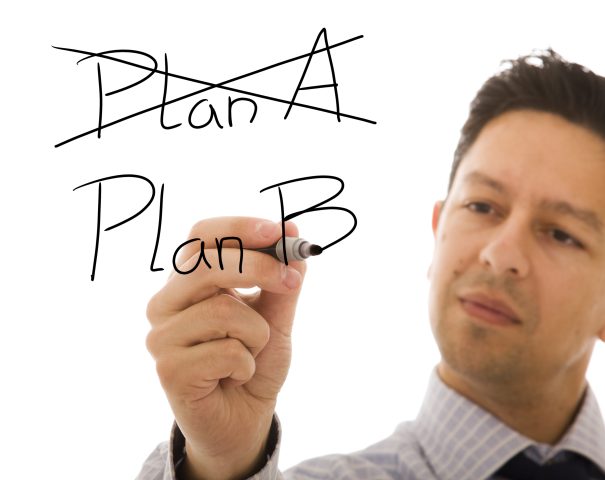Conquering the Craft of Decision Making: A Thorough Guide

The process of decision making is a fundamental component of our everyday lives, influencing everything from personal choices to work-related tactics. In a society overflowing with an overwhelming amount of information and options, honing the craft of wise choices has become essential for reaching goals and happiness. Regardless of whether you face a straightforward option or a challenging situation, improving your decision-making skills can result in more successful results and increased assurance in your choices.
This comprehensive guide aims to provide you with tested strategies and insights into the science of decision making. You will learn how to enhance your decision-making under constraint, prevent decision burnout, and balance instinct with rationality. With a focus on useful resources and approaches, we will delve into how to traverse the often complex field of decision making, enabling you to decide that reflect your principles and aspirations. Prepare to change your mindset to decision making and discover the secret to a more resolute and enriching way of living.
Recognized Strategies for Successful Selection
Effective decision-making is vital for not only individual and professional growth. A established technique is to create a clear structure for your determinations. This involves recognizing your objectives, gathering applicable information, and assessing your alternatives against established criteria. By following a systematic methodology, you can reduce risk and make better choices. Using decision-making tools, such as the SWOT matrix or decision trees, can help clarify complex choices and provide understanding.
Another technique is to include the practice of being present into your judgment process approach. By taking a brief moment to calm your mind and emotions, you can gain clear thinking and reduce stress, which allows you to face choices with a more unbiased way. Mindfulness helps you recognize emotional responses that may obscure judgment, leading to clearer rational choices. Implementing thoughtful breaks to reflect can also avoid rash decisions based on emotion or outside influences.
In conclusion, embracing the value of gut feelings alongside analytical reasoning can boost your judgment abilities. Gut feelings, often derived in prior knowledge, can provide valuable information that data alone may fail to capture. By learning to trust your instincts while also considering analytical insights, you can achieve a comprehensive viewpoint that integrates both reason and instinct. This approach enables you to manage decisions with confidence, particularly in ambiguous or high-pressure situations.
This Psychological Study and Scientific Principles Behind Decisions
Understanding the psychological aspects behind decision-making is essential for mastering this ability. Human thinking is often influenced by mental biases, which can skew our thought and lead to poor decisions. For instance, the readily available heuristic causes us to depend on immediate examples that come to mind, potentially ignoring superior options. By recognizing these biases, individuals can proactively work to counteract them and make sounder choices.
Additionally, the role of emotions cannot be underestimated. Emotional intelligence plays a key role in how we approach decisions, as our feelings can both obscure our judgment and provide important insights. Being leadership decision-making of our emotional responses during decision-making can help balance our intuition with logical reasoning. By training ourselves to recognize and manage our feelings, we can improve our decision-making process.
Finally, research in the field of behavioral science has revealed that decision-making can also be affected by environmental circumstances. For instance, the context in which a decision is made, such as the existence of interruptions or the pressure of time we experience, can significantly impact our ability to evaluate options appropriately. Establishing an environment conducive to considerate decision-making, including reducing stressors and disruptions, can boost our ability to evaluate information and achieve better outcomes.
Methods for Confident Choices in Indecision

Making decisions in indeterminate scenarios can be overwhelming, but specific methods can aid you navigate through indeterminacy with assurance. To start, accept the concept that uncertainty is a component of existence. In place of pursuing absolute certainty, concentrate on gathering relevant information and assessing the risks involved. Divide the decision into more manageable parts, weighing advantages and disadvantages for each component. This technique assists clarify your considerations and allows you to see various outcomes more distinctly.
A further effective technique is to implement a structured approach to making decisions to guide you. Models like the DECIDE model (Define the problem, Establish criteria, Consider alternatives, Choose the most favorable option, Formulate a strategy, Assess the choice) can provide guidance in turbulent moments. Additionally, seeking input from trusted friends or colleagues can help you gain different perspectives, aiding in the decision-making process. This team-based approach can uncover options you might not have noticed, leading to more knowledgeable decisions.
In conclusion, cultivate a attitude of flexibility and adaptability. Recognize that not every decision will result in the intended outcome, and that is part of the growth journey. Develop the habit of analyzing past decisions, both positive and bad, to identify patterns and insights gained. By viewing uncertainty as an moment for growth, you can face each decision with a sense of empowerment, thereby making confident choices even when results are uncertain.
